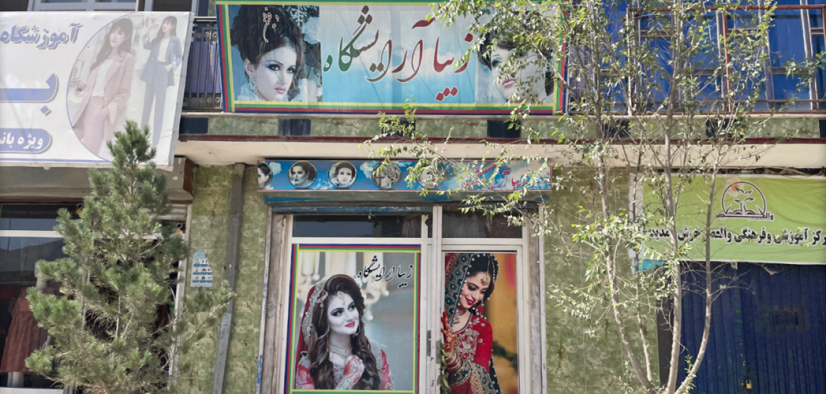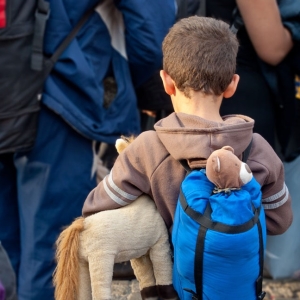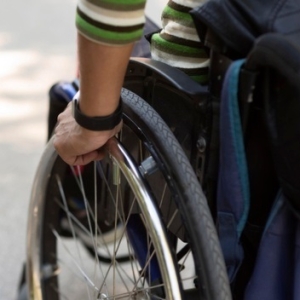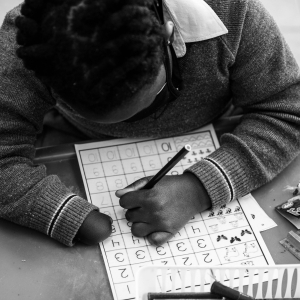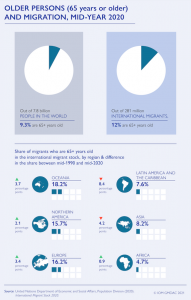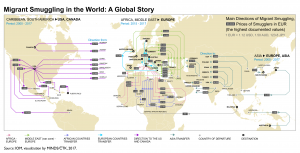In June 2021, a team of Samuel Hall researchers were conducting research in the township Shahrake Mahdia located in Kabul’s northern district of Dashte Barchi on how migration was foundational to the town’s development as well as for the hopes of its women. For many of the women interviewed, their negative past experiences of displacement had driven their desires to build and contribute to their community.
Between 2002 and 2021, 5.3 million Afghans returned home, according to UNHCR.1
As a result, homes, schools, and road infrastructure rapidly developed, in great part thanks to private investments and diaspora involvement and networks in Iran, Pakistan, Europe and Australia, in addition to some government and international community support.
In August 2021, everything changed. The women who shared their stories with us in June spoke to us again in September. This blog article focuses on their voices.2
A neighbourhood beauty parlour in Shahrake Mahdia, Kabul, Afghanistan. Shahrake Mahdia has developed over the past two decades as a place of settlement for IDPs, people migrating from rural areas to Kabul, and returning migrants from Pakistan and the Islamic Republic of Iran. Source: Samuel Hall, 2021/Nassim MAJIDI
June 2021: growing tensions and unease for women
Over the last two years, Shahrake Mahdia has experienced a drastic change – the number of thefts in the area have risen; which combined with repeated attacks on Hazara schools in the greater Dashte Barchi area have contributed to rising feelings of insecurity and concern amongst women interviewed.
Most women interviewed spoke openly about episodes of violence they experienced, including economic and security issues, which led to more disputes at home. Yet the majority of women wished to remain within their community. They expressed hopes to study, work and build a life in a township that seemed to be developing. While migration and mobility were described by men as realities of life, for the women interviewed, migration more often represented a strategy they wished to avoid due to a lack of information regarding migration opportunities, prior negative migration experiences, fear of revictimization and other reasons.
"Young people are full of despair, with no hope in the future.”
COVID-19 induced lockdowns and inflation conttributed to increased levels of poverty. Additionally, there was the growing presence of the Taliban.
During the past decade education had expanded in Shahrake Mahdia, but school and university closures during the pandemic impacted school attendance for girls and boys equally. Young graduates continued to find themselves unemployed or only able to find work in jobs that did not require their education. Others had no choice but to migrate elsewhere.
“Young people are full of despair, with no hope in the future. Most think of escaping,” exclaimed one respondent.
August 2021: Escape became the preferred option, but with clear limits for women.
Following August 2021 and the immediate aftermath, the private sector crumbled. The Taliban were unable to pay public sector staff, leaving uncertainty and fear about the future. Many businesses in Shahrake Mahdia closed, as both employers and employees—mostly men—were forced to migrate abroad due to the impact of sanctions and rising inflation.
Many women remained behind in the areas they lived in and spoke in the survey of the restrictions they faced on movement, education, and work under the Taliban. “The main concern for myself is that I can’t work and go to university anymore. I have been restricted and I am not a free person. When I think about my past efforts, my heart bleeds. Now, I am zero with no achievements,” stated Resham.*
Escape became the preferred option, but there are clear limits for women. Some women with male family members who had migrated earlier stated that they were scared of crossing international borders alone. The risk of an irregular border crossing was compounded for some—like Resham—who also had female family members with significant health issues, whom they would also be responsible for during migration.
“My father is in Iran and he says if we can [we should] go to Iran illegally, but my sister’s health problem is serious and we can’t take the risk,” added Resham.
Moreover, many of the women remaining in Afghanistan had inadequate information about how the diaspora could help their family members and other Afghans in Afghanistan.
September 2021: “What will await us now?”
For those who stayed behind in Shahrake Mahdia, their day-to-today lives changed drastically – in particular their mobility. Many were too scared to leave their homes and had given up all previous activities, including community groups and women’s empowerment projects.
“Women are restricted; they can’t go outside to work or to get an education. Public service is completely diminished. People want to receive their national ID and passports but there is no organization to offer them services. Educational centers are open but no one is willing to go to either school or university. Girls are restricted from school and university. Our future is completely dark and we see no light in our lives,” said Wargis.*
Another female research participant in Herat reflected on how women’s erasure from the economy has far-reaching impacts on communities, as women were the backbone of the local economy, but are now for all practical purposes unable to work outside home due to new restrictions.
The women who have remained in Shahrake Mahdia asked the same question: “What will await us now?”
Yet despite these issues, many women are running home schools for girls. Razia,* one woman we interviewed in a village in the Balkh province, was leading an embroidery course for women and marketing her products.
“An organisation came to our village whose main goal was to help women be financially independent by engaging them in agriculture, handicraft, tailoring and beautician industry. I was representing women and carried their voices to this firm. In the aftermath of August 2021, this organisation terminated its operations. Now women are engaged in handicrafts, but without any linkage to any organisation. They do it independently based on the offer they received from their neighbours or customers.
Urgent need for longitudinal research
One year on, answers seem to be stuck in time, as women’s rights continue to be restricted while taking a gradual and insidious turn for the worse.
There is an urgent need for longitudinal research to support Afghan women who have remained behind – like the women in Shahrake Mahdia. The conversation must be continued to highlight these women’s voices and to craft solutions based on their needs.
* Names have been changed to protect confidentiality.
- 1UNHCR, Operational Data Portal: Afghanistan situation.
- 2The data collection included key informant interviews with 17 local residents – business owners, non-governmental organization employees, government officers, police, teachers, and youth representatives – informal interactions and observations, as well as four focus groups with men and women. Follow-up calls in September 2021 were carried out with several women and business owners initially interviewed in June, in order to capture their thoughts and how their situation had changed under the Taliban.

